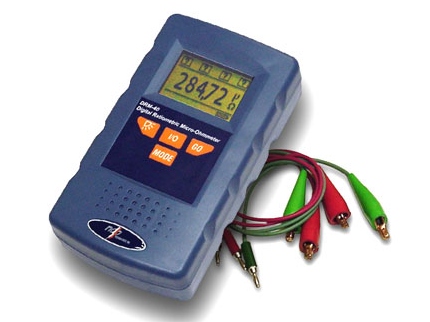ohm meter
Ohmmeters are electronic measuring devices for measuring resistance. These resistance meters are used in research, development and maintenance and can be used for resistance measurements on electronic components, circuits and assemblies, cables, switches, relays and on many other components and systems. Along with voltmeters and ammeters, ohmmeters are among the general-purpose measuring instruments, all of which are integrated into multimeters and digital multimeters.
Ohmmeters can be used to measure resistance values from a few micro-ohms to the mega-ohms range. They work according to the voltage- current method, in which a constant current flows through the resistor and the resistance value is determined via Ohm's law, or with a reference resistor. When measuring the smallest resistances in the micro- and milli-ohm range, the resistance measurement is affected by the contact resist ances of the terminals and the conductor resistances of the test leads. Precision ohmmeters and micro ohmmeters therefore have four terminals, called Kelvin terminals, and use four- wire measurement as the measurement method, in which the supply leads of the DUT and the test leads are separated from each other.
Depending on the area of use and application, ohmmeters have pointer instruments on which the resistance value is indicated analogously by pointer deflection. In addition, there are digitally indicating ohmmeters that are equipped with protective circuits against overvoltages. Ohmmeters are used in trade and industry, as well as in vocational training and internships.

